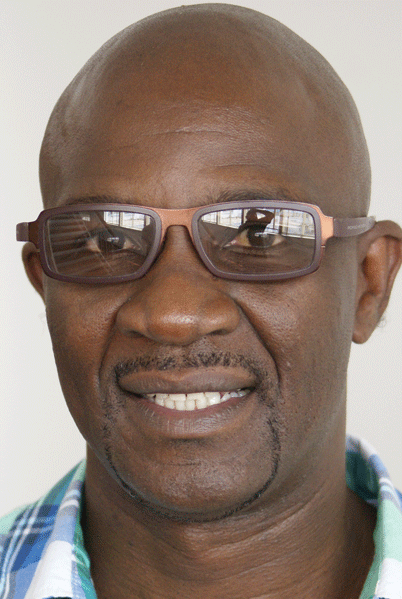
IN 1928 MAYNARD KEYNES guessed that within a hundred years, the standard of living in Western Europe and America would be between four and eight times as high as it is was at that time.
Since nobody could sensibly wish to consume four or eight times as much as they did in 1928, people would come to recognise the pursuit of money for what it is a somewhat disgusting, morbidity, one of those semi-criminal, semi-pathological propensities which one hands over with a shudder to the specialists in mental disease.
Keynes enthused that for the first time since his creation man will be faced with his real, his permanent problem, how to use his freedom from pressing economic cares, how to occupy the leisure which science and compound interest will have won for him to live agreeably, wisely and well.
The quest for this wealthy Utopia has resulted in a large and growing chasm between the rich and the poor countries which president George Bush (Jr). referred to as the “Haves and Have Mores”.
Today, the Global Wealth Pyramid has a very wide base and a sharp point. The richest 1% of adults control 43% of the world’s assets; the wealthiest 10% have 83%. The bottom 50% has only 2%. This suggests a huge disparity of influence.
The wealthiest tenth control the vast bulk of the world’s capital, giving them a lot of say in funding business, charities and politicians. The bottom 50% controls hardly any capital at all. It is easy to understand why people might regard this as unfair. The top 0.1% does not seem to be working 80 times as hard as everyone else.
The most common measure of inequality is the Gini coefficient. A score of zero means perfect equality, everyone earns the same.
A score of one means that one person gets everything. The United States of American’s Gini coefficient has risen from 0,34 in the 1980s to 0,38 in the mid 2000s. Germany’s has risen from 0,26 to 0,3 and China’s has jumped from 0,28 to 0,4.
- Chamisa under fire over US$120K donation
- Mavhunga puts DeMbare into Chibuku quarterfinals
- Pension funds bet on Cabora Bassa oilfields
- Councils defy govt fire tender directive
Keep Reading
Surprisingly, over the same period global inequality has fallen from 0,66 in the mid 1980s to 0,61 in the 2000s, according to studies by Columbia University.
The reason bring that former poor countries like China and India have grown faster than richer countries. As people get wealthier they tend to devote more discretionary income to what are called “positional goods”, items such as limited editions, celebrity endorsed products whose main value lies in their desirability in the eyes of others.
The willingness of people to buy such products combined with the vast new markets of millions of emerging middle-class consumers in China, India and other countries has boosted the stars’ brands beyond anything that was possible in the past. The point about positional goods and of fashion and brands in general is their relative attractiveness.
Owning the latest gadget or garment is particularly attractive when others do not have it, rather as buildings are valuable because of their location, thus how desirable they seem to others. With such goods, a rising tide does not lift all boats.
One yearns not to be merely richer but richer than one’s neighbours. Therefore, the more brands, fashion and houses become important, the more relative income and inequality become matters of concern.
Positional goods do not affect material welfare as do poor schools or sub-standard housing. However, they do affect people’s quality of life and being.
This has physiological and physical consequences. in 2009, a controversial book entitled “The Spirit Level: Why equality is better for everyone”, authors; Richard Wilkison and Kate Picket use copious graphs and statistics to show that inequality is associated with all manner of social ills.
They argue that inequality causes chronic stress and makes people secrete too much of a hormone called cortisol.
This normally has benign metabolic and other functions. Produced in large quantities it can harm among other things the brain and the immune system.
So cortisol may be a direct link between inequality and bad health. Inequality also impairs the production of a second hormone oxytocin. Sometimes referred to as the “cuddle hormone” this is secreted in child birth and during breastfeeding, and seems to encourage pair bonding and trust in others.
The claim is that people living inequality society secrete less oxytocin, hence they have lower levels of trust.
Not all pundits agree with Wilkson and Pickett’s conclusion, in fact some think their book’s statically claims are mostly bunk. For example scientific literature found little consistent evidence of a link between bio-markets of stress and social our economic status.
What seems to affect levels of stress hormones is not income, but competition for status as humans seek high status. Losers in competitions for esteem may well suffer. Societies with fierce status competition may well be unhealthier and more violent.
Economists have long argued that inequality is a much less important problem than poverty. However, this debate will probably never be resolved.
The problems at the bottom are reasonably well understood: Technology enables the automation of blue-collar trades, globalisation lets unskilled jobs move to poorer cheaper countries; shrinking trade union membership erodes workers’ bargaining power. If you measure inequality of wealth rather than income, the global pecking order changes.
However, if you measure consumption, the world seems a more equal place.
Harriman Chidawanyika is a consumer psyclologist. He writes in his personal capacity.










